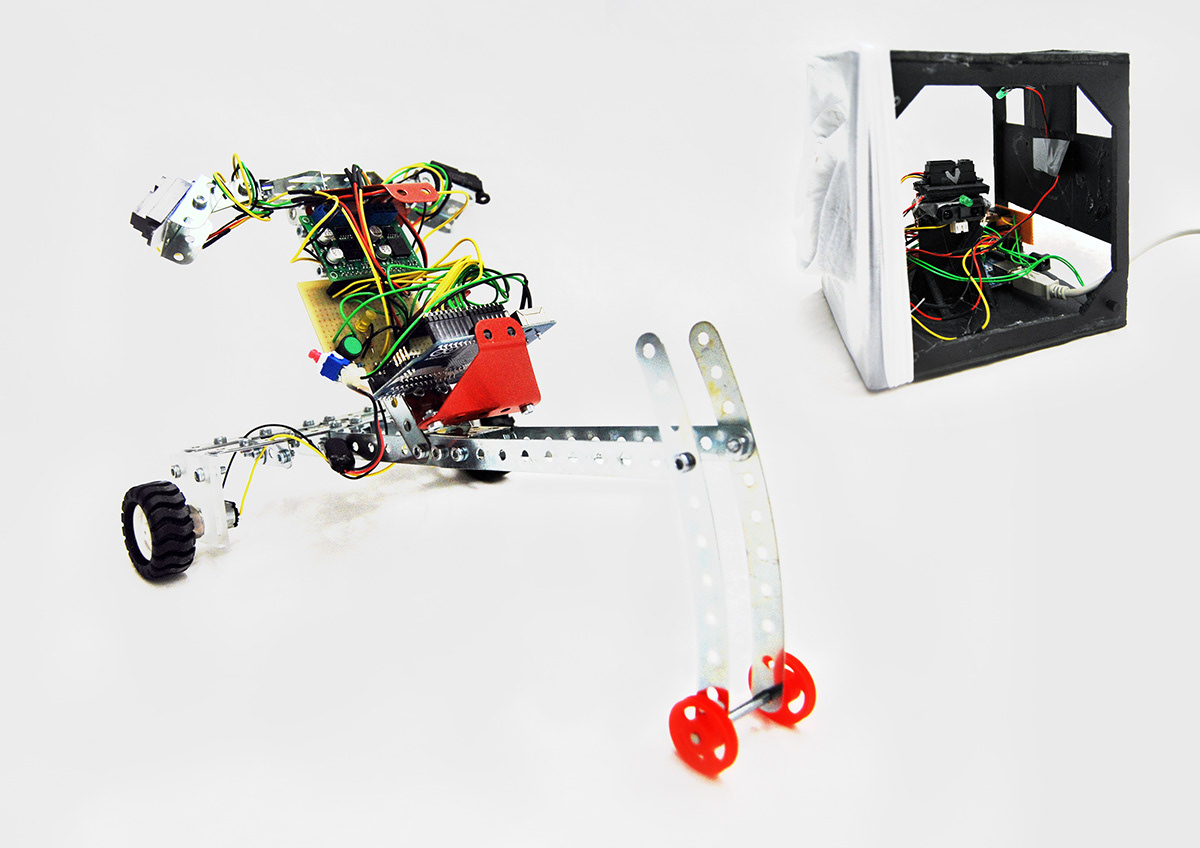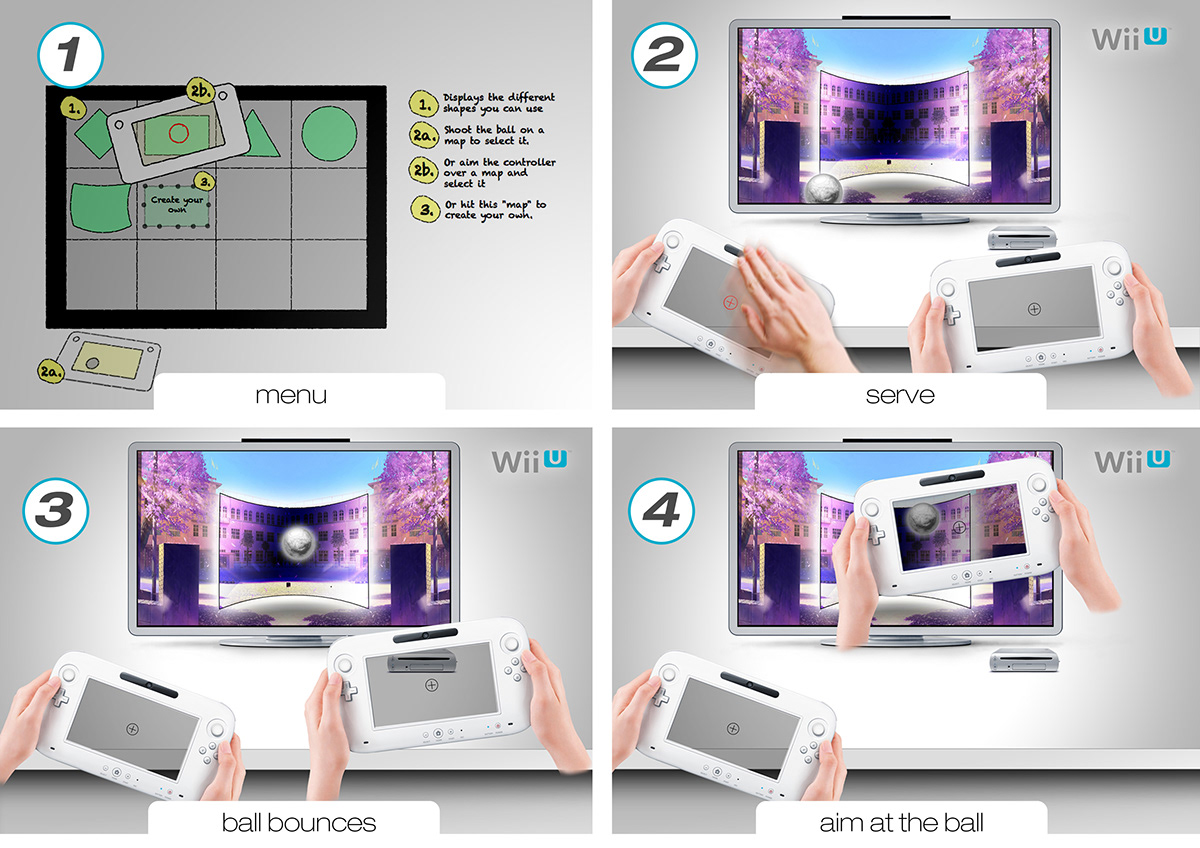This is a small collection of exercises and projects from various courses made during 2011 at Chalmers University of Technology, a MSc programme in Interaction Design.
The work amount for each exercise varied from 5 hours to 3 days and consisted in applying IxD theories and technologies.
The Sens(ible) Calculator

Individual Exercise in Aesthetics of Interaction course @ CTH.
Brief (short):
"Your task is to design a calculator, aiming for the aesthetic ideal of sensing, i.e. a very tangible calculator.
When you design consider Djajadiningrat et al’s ideas on feedforward, interaction patterns (timing, rhythm and flow), richness of motor actions, and freedom of interaction. If you like you can also skew your design towards either the Playfulness ideal or the Criticism ideal, making a fun tangible calculator (well in line with Petersen et al’s ideas on improvisation, play and intrigue as means to create a true pragmatist/sensing design!) or a critical tangible calculator."
When you design consider Djajadiningrat et al’s ideas on feedforward, interaction patterns (timing, rhythm and flow), richness of motor actions, and freedom of interaction. If you like you can also skew your design towards either the Playfulness ideal or the Criticism ideal, making a fun tangible calculator (well in line with Petersen et al’s ideas on improvisation, play and intrigue as means to create a true pragmatist/sensing design!) or a critical tangible calculator."
Description:
The dance calculator concept is a large scale device used to perform calculus in a way that engages both body and mind.
The main components of the calculator are the pads for the user`s hands and feet. The pads are supported by the lower and top plates and can move freely in the perimeter of the plates. The pads and they’re freedom in movement act as both input and output modalities, eliminating the visual component represented by the display in a classic calculator.
The main components of the calculator are the pads for the user`s hands and feet. The pads are supported by the lower and top plates and can move freely in the perimeter of the plates. The pads and they’re freedom in movement act as both input and output modalities, eliminating the visual component represented by the display in a classic calculator.
Soon as the user steps inside he/she can observe the free movements of both top and bottom pads and also the fact that the calculator generates random sounds depending to the user movements. Thus in this way, the user creates not only the elements of the calculator but also music for supporting the dance movements.
Interacting and input:
When inputting numbers and functions, the device requires a single rule. This means that the user can input one element at a time, using in alternation the feet and hands.
At this point, the user will receive two short auditory instructions:
- Draw!
- Alternate between feet and hands
At this point, the user will receive two short auditory instructions:
- Draw!
- Alternate between feet and hands
Result of the calculation as output:
Once the user has created the equal sign, the result of the calculation is given. Here the pads become motorized, thus the machine resembles a dance instructor that conducts the user.
Because the machine recognizes the user’s drawn input, the result will be given using the same coherency of the drawn input with the same alternation between hands and feet...
Once the user has created the equal sign, the result of the calculation is given. Here the pads become motorized, thus the machine resembles a dance instructor that conducts the user.
Because the machine recognizes the user’s drawn input, the result will be given using the same coherency of the drawn input with the same alternation between hands and feet...
--- If you think this is interesting and want to read more, ask me for the full report ---
The Photoshop Camera

Individual Exercise in Aesthetics of Interaction course @ CTH.
Brief (short):
Brief (short):
"Your task is to transfer the “interactive soul” of a software to a more low-tech object. Study any of the following softwares: Photoshop, Microsoft Word, Facebook or Spotify. Choose one you know really well. How does it feel to interact with it? Are there special interaction traits? What does it “do” for you, and what does it demand from you?
Analyze the program (as a whole) in terms of properties such as:
-Interaction-related: Freedom of Interaction
-Expression-related: Feedback
-Behavior-related: Forgiveness
-Change and Time-related: Temporal aspects
-User-related: Company"
etc.
-Behavior-related: Forgiveness
-Change and Time-related: Temporal aspects
-User-related: Company"
etc.

Rehabilitation Toy

Team Project in Tangible Interaction course @ CTH.
This is a system composed of a low cost haptic controller and a RC "dragster" toy car. The two devices can fuction in stand alone mode or as a control system for hand rehabilitation exercises.
When used in a stand alone mode, the "CUBE" is working as an haptic controller for software-based exercises that could be used on rehabilitation programs for users of every age. The exercises could consist of tasks like moving an object into a digital space to accomplish goals such as reaching a target or avoid obstacles.
When the patient is a child, those kind of exercises could be extremely boring and not motivating so there is the need of finding a way to make them engaging. For motivating children, they can have the RC car with which they can play freely when they are at home. The car, in stand-alone mode, is controlled by running behind it and using the hands to accelerate and steer it, which can be useful itself for physical coordination purposes. During the therapy sessions, they can bring their own car and connect it to the cube.
Once connected, the car responds only to the inputs given by pressing the three sides of the cube.
The "CUBE" :
Because these simple exercises do not require precise force feedback we were able to eliminate the mechanism found in known haptic controllers and also software challenges of creating connection points between virtual objects.
The solution found was to apply fabrics in front of the IR distance measuring sensors, thus the haptic feedback relies on the fabrics elasticity itself.
The result was a simple device which consists of a frame of the cube, three IR sensors placed in the center and the elastic fabrics that cover the structure.
The IR sensors are measuring the X and Y axes, controlling the object left-right(x), up-down(y).
The result was a simple device which consists of a frame of the cube, three IR sensors placed in the center and the elastic fabrics that cover the structure.
The IR sensors are measuring the X and Y axes, controlling the object left-right(x), up-down(y).
*A full report is available on request.
Team Members: Peter Dahlgren, Marco Dondana, Calin Giubega

Toy Flute
Team Exercise in Prototyping course @ CTH.
The Flute is a musical instrument for children and parrents. The main intention is to create fun expressions by movements that will influence the sound. The Flute consists of a Plexiglas tube with four buttons and one accelerometer. The user can press the buttons to play notes, in a way similar to playing a real flute, and tilts the instrument to change the value of the notes.
How it works
The four buttons are used to play the seven notes in a scale. Pressing only one button plays the first, third, fifth and seventh notes, and pressing two adjacent buttons plays the notes in between (two, four and six). The accelerometer detects the tilt on two different axes, and uses it to change the octave and scale of the flute. An LED lights up when a note is played, giving visual feedback.
The four buttons are used to play the seven notes in a scale. Pressing only one button plays the first, third, fifth and seventh notes, and pressing two adjacent buttons plays the notes in between (two, four and six). The accelerometer detects the tilt on two different axes, and uses it to change the octave and scale of the flute. An LED lights up when a note is played, giving visual feedback.
Please view the video below for a demonstration.
Team Members: Mikael Danell, Lutz Reiter, Calin Giubega, Xinyun Yao, Erich Grunewald

Bownsio

Team Exercise in Prototyping course @ CTH.
Team Members: Robert Fohlin, Calin Giubega, Joachim Haglund, Micael Svensson



--- Feel free to comment and appreciate if you liked these small projects---


